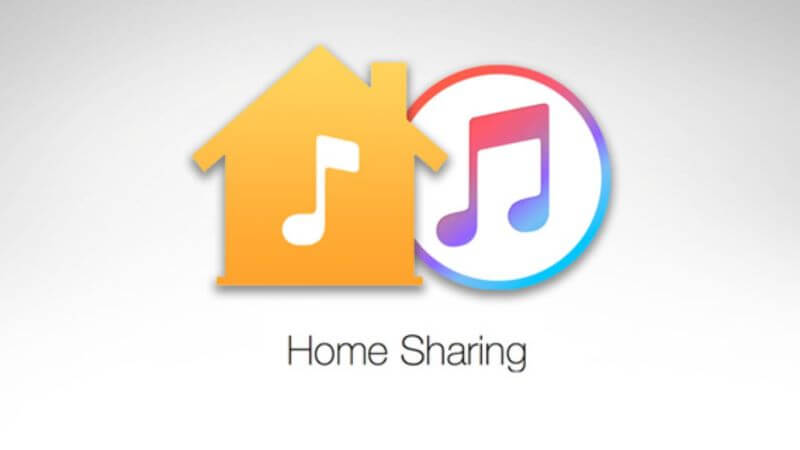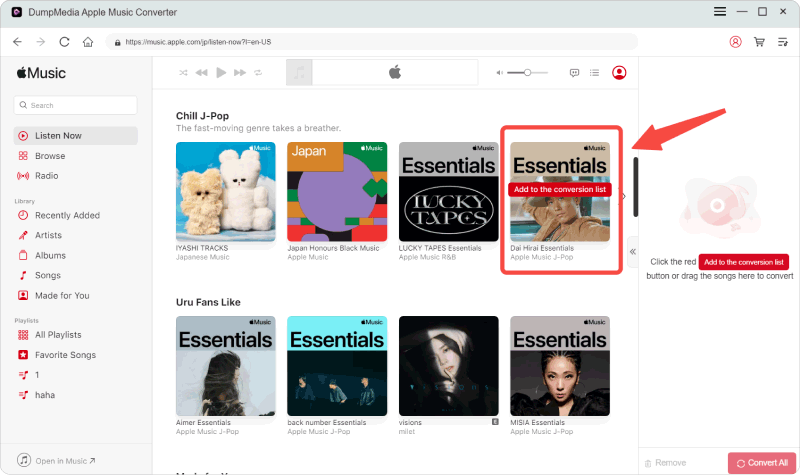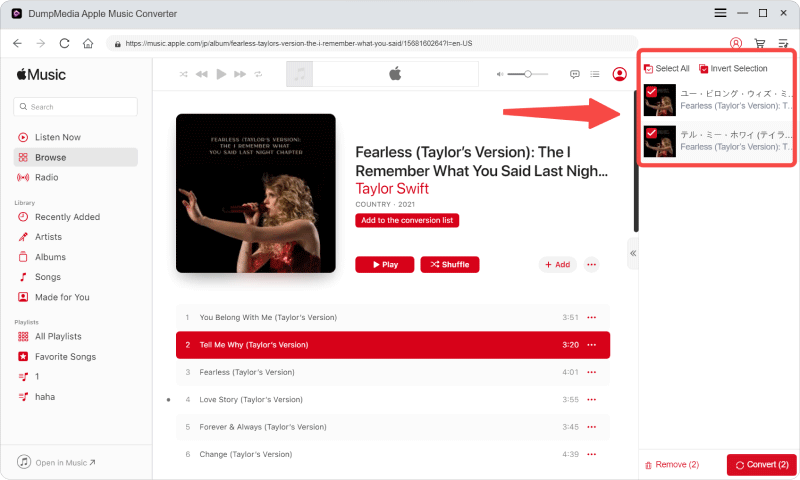
iTunes Home Sharing is a convenient feature that allows you to share your iTunes library with other devices on your home network. Whether you want to stream music, movies, or TV shows across different devices, Home Sharing simplifies the process. However, encountering the dreaded "iTunes Home Sharing not working" issue can be frustrating and hinder your seamless media experience.
In this article, we will explore various troubleshooting steps to help you fix the “iTunes Home Sharing not working” issue. From checking network connectivity to verifying settings on your devices, we'll cover several practical solutions that can get your Home Sharing up and running again. So, let's dive in and restore the smooth functionality of iTunes Home Sharing.

Contents Guide Part 1: Why is iTunes Home Sharing Not Working?Part 2: How to Fix iTunes Home Sharing Not Working Issue?Part 3: Recommended: Keep iTunes Songs Forever Offline to Avoid Home Sharing Not Working IssuePart 4: Conclusion
iTunes Home Sharing is an incredibly useful feature, but there are several reasons why it may stop working unexpectedly. Understanding these reasons can help you identify and resolve the issue effectively. Here are some of the top reasons why iTunes Home Sharing might not be working:
It’s important to consider these additional reasons when troubleshooting iTunes Home Sharing. By identifying the specific cause, you can apply the appropriate solutions to resolve the issue and restore seamless functionality to your iTunes library sharing.
If you're experiencing issues with iTunes Home Sharing, don't worry! There are several troubleshooting steps you can take to resolve the problem and get Home Sharing back on track. Here are some effective solutions to fix the iTunes Home Sharing not working issue:
Check Network Connectivity:
Ensure that all devices involved in Home Sharing are connected to the same Wi-Fi network. Verify that the network connection is stable and not experiencing any interruptions. Restarting your router can sometimes help resolve network-related issues.
Disable Firewalls and Security Software:
Temporarily disable any firewalls or security software on your computer or devices. These programs can sometimes block Home Sharing connections. If Home Sharing works after disabling the software, adjust the settings to allow iTunes through the firewall or whitelist Home Sharing.
Update iTunes, iOS, and macOS:
Ensure that you have the latest versions of iTunes, iOS (on your iOS devices), and macOS (on your Mac). Updates often include bug fixes and improvements that can address Home Sharing problems.
Verify Apple ID and Account Settings:
Confirm that all devices are signed in with the same Apple ID used for Home Sharing. If you have multiple Apple IDs, sign out and sign back in with the correct one. Also, make sure that Home Sharing is enabled in iTunes on your computer and the settings on your iOS devices.
Prevent Sleep Mode:
Adjust the sleep settings on your devices to prevent them from entering sleep mode while using Home Sharing. This ensures a consistent connection and uninterrupted access to shared media.
Minimize Local Network Interference:
Identify and minimize any potential sources of interference within your local network environment. Keep devices away from appliances or equipment that may cause signal interference, such as microwaves or cordless phones.
Restart Devices:
Restarting your computer, iOS devices, and router can often resolve temporary glitches and refresh the network connection. Power off each device, wait for a few seconds and then power them back on.
Reset Home Sharing:
In iTunes on your computer, disable Home Sharing and then enable it again. Go to File > Home Sharing > Turn Off Home Sharing. Afterward, go back to the same menu and select Turn On Home Sharing. This can help refresh the Home Sharing connection.
Restart Bonjour Service:
Bonjour is a networking technology used by iTunes for Home Sharing. Restarting the Bonjour service on your computer can sometimes resolve connectivity problems. Open the Services application (type "services. msc" in the Windows search bar), find "Bonjour Service," right-click on it, and select Restart.
Check DNS Settings:
Ensure that your DNS (Domain Name System) settings are configured correctly. You can use automatic DNS settings provided by your router or try using public DNS servers like Google DNS (8.8.8.8 and 8.8.4.4) or Cloudflare DNS (1.1.1.1 and 1.0.0.1). Incorrect DNS settings can sometimes affect Home Sharing.
Create a New Home Sharing Library:
If all else fails, try creating a new Home Sharing library. Disable Home Sharing on all devices, sign out of the Apple ID associated with Home Sharing, and then sign back in. Enable Home Sharing again and set up a new library. This can help resolve any underlying library-related issues.
Update Router Firmware:
If your router has outdated firmware, it may cause compatibility issues with Home Sharing. Visit the manufacturer's website to check for any available firmware updates. Updating your router's firmware can improve network stability and address connectivity problems.
Remember to test Home Sharing after each step to check if the issue has been resolved. It's also recommended to have backups of your media library and data before attempting any major changes or resetting options.
By following these additional steps, you should be able to troubleshoot and fix most iTunes Home Sharing issues. However, if the problem persists, it may be worth reaching out to Apple Support for further assistance tailored to your specific situation.
DumpMedia Apple Music Converter is a third-party software designed to convert Apple Music tracks into various audio formats. With DumpMedia Apple Music Converter, users can bypass the DRM (Digital Rights Management) protection applied to Apple Music songs and download them to their computer. This allows for offline playback and the ability to transfer the converted files to other devices or platforms.
DumpMedia Apple Music Converter offers features such as batch conversion, high-quality output, and preservation of ID3 tags. It supports a wide range of output formats, including MP3, FLAC, WAV, AAC, and more. The software is compatible with both Mac and Windows operating systems, providing users with flexibility in choosing their preferred platform.
Here’s how to use the tool:

3. Select Output Format: Choose the desired output format for the converted files. DumpMedia Apple Music Converter supports various formats like MP3, FLAC, WAV, AAC, and more.
4. Customize Output Settings: Optionally, you can customize output settings such as audio quality, codec, bit rate, and sample rate according to your preferences.
5. Start the Conversion Process: Click on the “Convert” button to start the conversion process. DumpMedia Apple Music Converter will begin converting the selected Apple Music tracks into the chosen output format.

In conclusion, this article has provided valuable insights into troubleshooting the iTunes Home Sharing not working issue. We explored common reasons behind the problem, such as network connectivity issues, software conflicts, outdated software versions, and incorrect account settings.
Additionally, we discussed solutions such as checking network connectivity, disabling firewalls, updating software, verifying Apple ID and account settings, preventing sleep mode, minimizing local network interference, and restarting devices.
If you're looking for a tool to enhance your Apple Music experience, DumpMedia Apple Music Converter can be a valuable asset. It enables you to convert Apple Music tracks and bypass DRM restrictions, allowing you to enjoy your music offline and on different devices.
DumpMedia Apple Music Converter offers features like batch conversion, high-quality output, and compatibility with both Mac and Windows operating systems. It allows you to convert Apple Music to popular audio formats like MP3, FLAC, WAV, and more while preserving important metadata.
